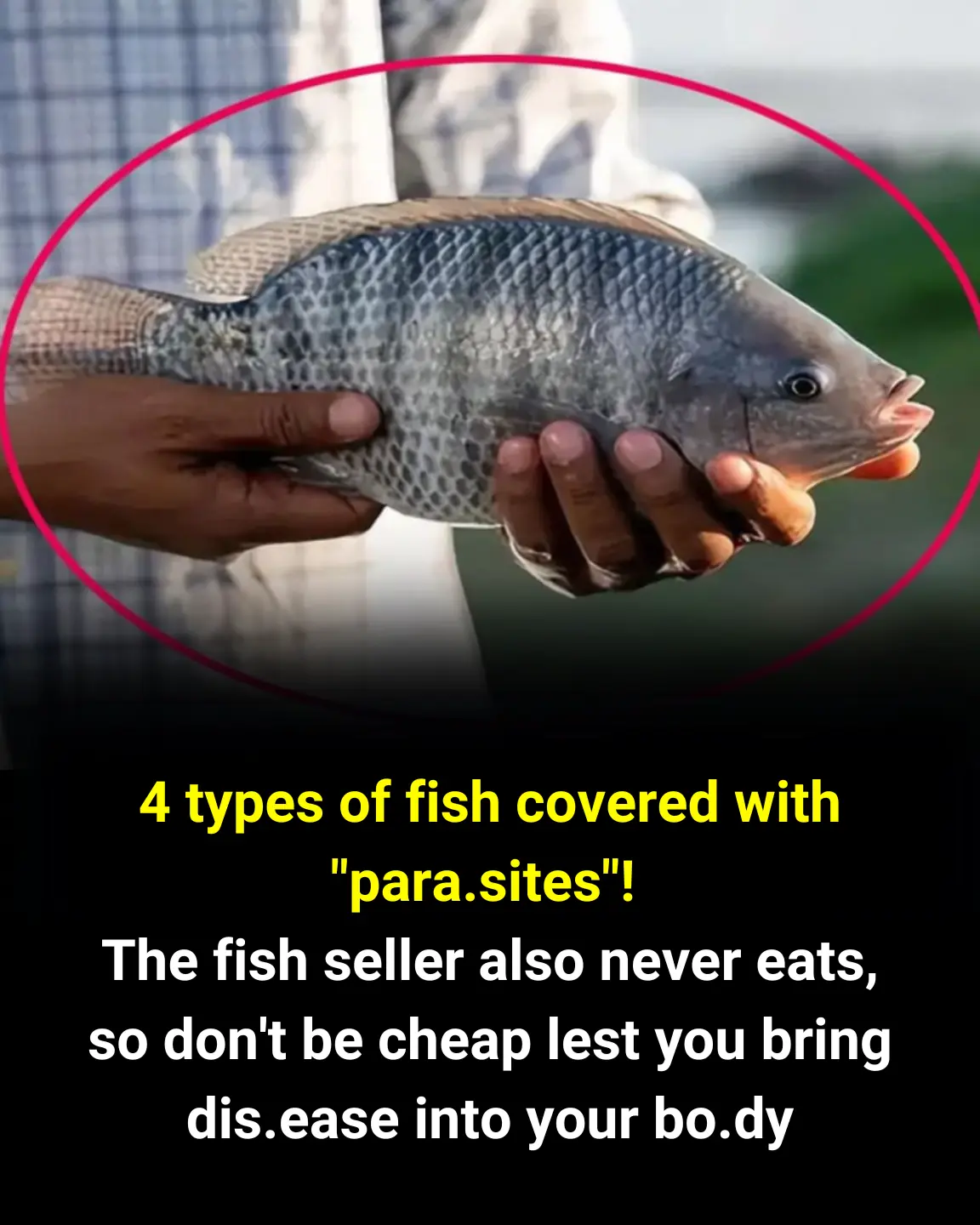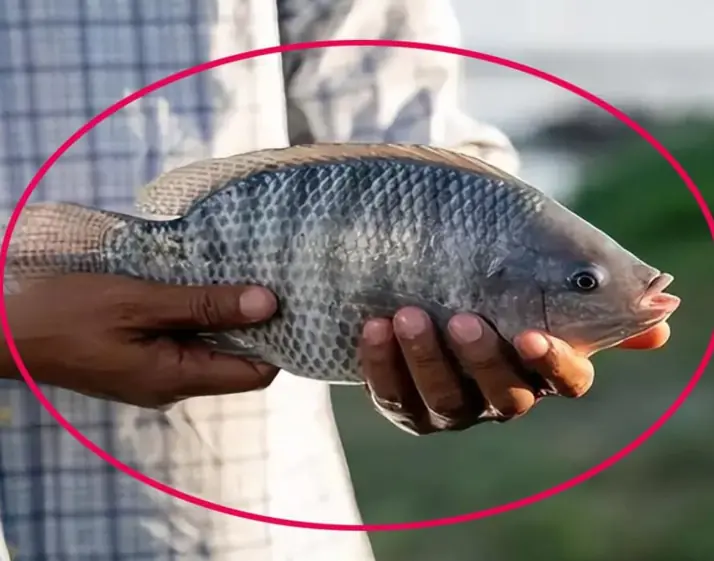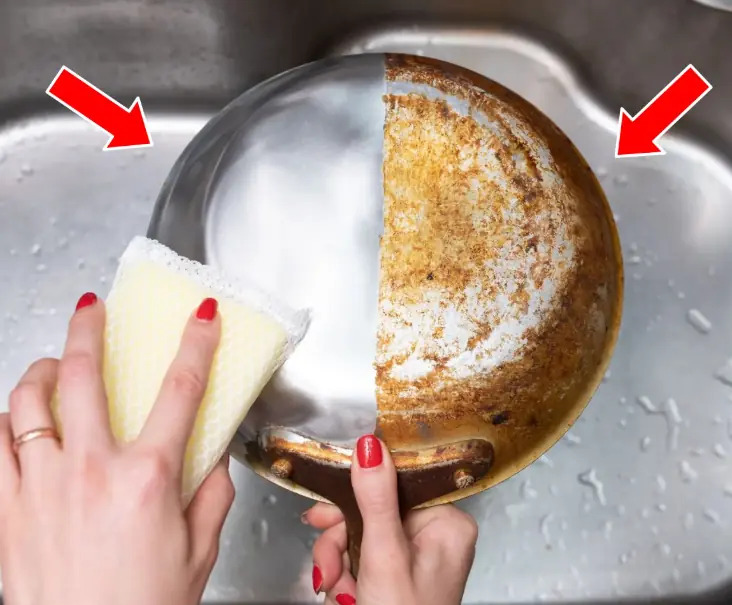
Everyone should pay attention and avoid these 4 types of fish

Four Types of Fish Infested with "Para.sites"! Even Fish Sellers Never Eat Them, So Don’t Be Tempted by Cheap Prices
Fish is an essential ingredient on every family’s dining table. However, there are four types of fish that you should never buy because they are full of "parasites," and even fish sellers avoid eating them. If you come across such fish, do not buy them.
With the rise in living standards, people are willing to purchase healthier ingredients and try to avoid consuming unhealthy foods as much as possible.
Yellow Croaker Fish – Infested with "Parasites"
Yellow croaker fish is not only delicious but also rich in unsaturated fatty acids, making it highly nutritious. It is a favorite among both the elderly and children.
However, what many people don’t know is that yellow croaker fish often lives in shallow waters, which are prone to environmental pollution and poor water quality. Insects and grasshoppers decompose in these waters, leading to the formation of decayed matter that attracts a large number of parasites inside the yellow croaker fish.
To adapt to living in shallow waters, yellow croaker fish develops a slimy layer on its body, which also serves as a breeding ground for parasites. While fish sellers may sell yellow croaker fish, they themselves usually avoid eating it.
From their perspective, yellow croaker fish is considered unclean and unsuitable for consumption. If you choose to buy it, pay close attention to the fish’s skin color. If it appears dirty, this indicates that the fish lived in a poor environment, and you should avoid buying it.
If you still want to eat yellow croaker fish, make sure to remove all internal contents thoroughly to minimize parasite risks. Carefully cleaning and cooking it at high temperatures will help eliminate most parasites.
Additionally, yellow croaker fish has some sharp spines on its head that contain toxins. Be cautious to avoid being pricked by these spines, as they can cause adverse allergic reactions.
Overall, due to its high parasite content, yellow croaker fish is not recommended for consumption. If you crave the taste of fish, consider choosing a different variety.
Catfish – Infested with Parasites
Like yellow croaker fish, catfish is known for its delicious meat, and since it has fewer small bones, it is particularly suitable for children and the elderly.
During the hot summer months, many people enjoy grilling outdoors, and catfish is often a staple at barbecue gatherings due to its soft and easy-to-cook flesh. Many households also choose to serve catfish to guests because of its great taste and texture.
However, since catfish lack scales and have a slimy skin surface, they are more prone to carrying parasites.
In artificial farming environments, water quality is better maintained, so farm-raised catfish tend to have fewer parasites. However, in the wild, where living conditions are poor, catfish are much more likely to carry parasites.
Silver Carp (Bighead Carp) – One of the Four Main Fish Species
Silver carp is a common fish on many dining tables. Compared to other fish species, it has a high reproductive rate and rapid growth.
In artificial farming, silver carp can grow from a small fry to a 3-4 pound adult fish in just seven to eight months, making it a profitable choice for fish farmers. Due to its fast growth, silver carp is also relatively cheap.
Since silver carp has thick flesh, people usually marinate it with onion, ginger, and garlic before cooking to enhance its flavor. Besides stewing, many households enjoy frying or stir-frying silver carp, which effectively kills parasites.
Like yellow croaker fish, silver carp feeds on organic debris, making it prone to harboring parasites. To accelerate their growth, some fish farmers even inject antibiotics into silver carp.
While this prevents fungal infections, it also poses potential health risks to humans. When buying silver carp, check the condition of its gills. If they appear rotten, this indicates that the fish is not healthy, and you should avoid purchasing it.
Today, with an abundance of alternative fish products available, many people are no longer interested in buying silver carp. Although it is cheap, it has a strong fishy smell and an unappealing taste, making it unpopular among those with discerning palates.
Tilapia – Infested with Parasites
Tilapia is widely loved for its tender meat. Whether fried or steamed, it provides a satisfying culinary experience.
However, unlike typical freshwater fish, tilapia can survive in both freshwater and seawater. Its adaptability is strong, making it a versatile species.
To save on farming costs, some fish farmers even use pig manure as feed for tilapia.
Since pig manure is rich in nutrients, it promotes rapid growth in tilapia. However, this crude and unsanitary farming method also results in tilapia containing a high number of parasites, making it unsuitable for human consumption.
Conclusion
These are four types of fish that are commonly infested with parasites, so people should be cautious when eating them.
News in the same category


Insisting on keeping a habit, w.oman must have dialysis for life

5 things to do when waking up that are good for people with high cholesterol

US: Breakthrough k.i.dney c.a.ncer vaccine development

47-year-old woman suddenly had a headache, almost d.i.ed from a br.ain he.morrhage after taking a bath

A Sign of Stroke May Occur 90 Days in Advance

This vegetable is "more nutritious than meat, cheaper than medicine"

8 signs of kidney failure that if ignored may require lifelong dialysis

12 Signs of Low Blood Sugar

Scientists Discover Body’s ‘Kill Switch’ Capable of Destroying Cancer Cells

'Shocked' with 3 'secret' habits that are more harmful to the liver

5 habits to help young people avoid s.t.ro.ke

8 Foods That Help Eliminate Cancer Cells

9 Foods to Limit If You Have Hypothyroidism

4 types of food that ca.n.cer ce.lls are very "terr.if.ying", maintain eating more every day, mal.ignant tu.mors stay away

Cold hands and feet are not necessarily due to cold weather, they can be a sign of 4 da.ng.erous di.seases

The Surprising Health Benefits of Eating Red Apples Every Day

How to identify benign and malignant lymph nodes

Observe Your Nails to Detect Health Issues

Everyone should pay attention and avoid these 4 types of fish
News Post

Why Do Stairs Usually Have an Odd Number of Steps Instead of an Even Number? The Answer Is Surprisingly Simple

Tips for Storing Ginger Without Refrigeration – Keep It Fresh for a Year Without Sprouting or Rotting

What kind of job is that?

The circle made a crying sound

What do you see first?

Trump on a $250 bill? GOP lawmaker's currency proposal faces roadblock

Pay attention when renting a motel or hotel room

Easily scrubbed clean without any effort

How to watch the 7 Planets news parade tonight, February 28

Smartphone users should know

Making bean sprouts is very simple, anyone can do it

When someone is choking, stay calm and help them immediately by following these steps

Fish b.o.ne stuck in throat - 9 tips to cure fish bone stuck in throat at home, effective immediately

These 5 groups of people should not eat tofu

Hiccups - 6 ways to get rid of hiccups quickly that you may not know

Tooth se.nsitivity - 4 tips to help reduce se.nsitivity instantly

Insisting on keeping a habit, w.oman must have dialysis for life

Tourists carrying a girl up thousands of stone steps to the emergency room causes a stir in the online community

Donald Trump and Keir Starmer insist Special Relationship is alive and well despite ten.sio.ns over Ukraine at historic White House summit
